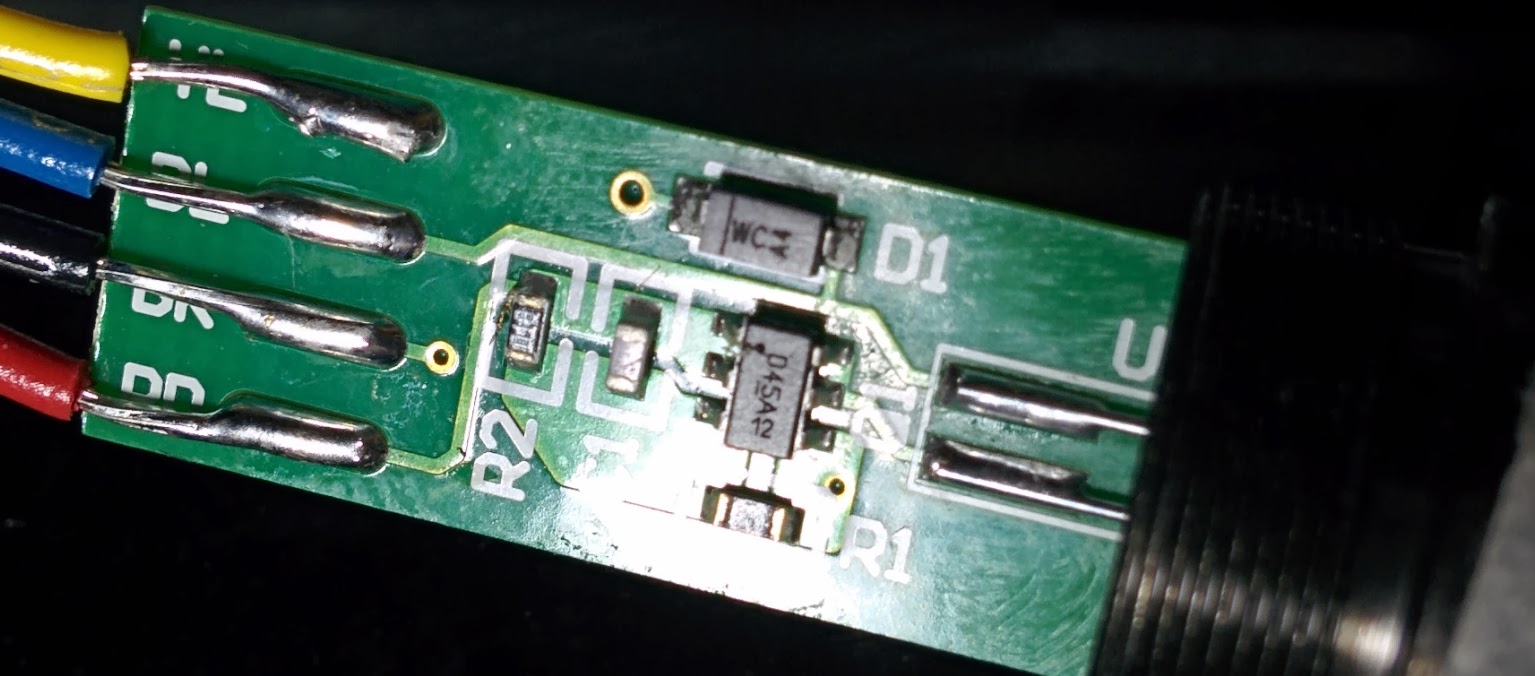Laser



Details on the laser diode
According to the safety warning bundled with the printer, it is a 405nm wavelength, 120mW violet laser diode. Since the all three legs of the diode, as it can seen on the pictures, are soldered to the PCB, and since four cables connect the diode to the main PCB of the Form 1, it is assumed that it's a laser diode including a photodiode.
As the output power of the laser diode can vary strongly just with a little room temperature change (laser output power will be different with 20 degrees celsius room temperature than with 25 degrees celsius room temperature) there is a photodiode included in the laserdiode, to give immediate feedback to the main processor about the current laserpower. If the output power of the laser diode changes due to room temperature change, the main processor can immediately adjust that output power by changing the voltage of the laser diode.
Here's a picture of such a laserdiode with integrated photodiode: http://de.wikipedia.org/wiki/Datei:Laser_diode_with_the_case_and_window_removed-powered_off.jpg
The diode is connected with the main PCB through four cables: yellow, blue, black and red. black and red are the - and + of the laser diode, yellow and blue are the - and + of the photodiode.
Optics of the laser diode
At this point it is not fully clear what the optics consists of, but it must be certainly at least one collimator lense for focusing the beam overall, and most likely a cylindrical lense to compensate for the elliptical shape of the beam and be able to focus it to a round point, rather than an ellipse. The lense will most likely consist of glass, as plastics would very quickly melt.
Front view with USB microscope of laser diode with lens removed

Comments (2)
MongerDesigns said
at 6:00 pm on Feb 4, 2014
I wonder if it would have been possible to reshape/focus the beam size to be even thinner than the 300nm (that eventually lands on the bottom of the resin tank). Obviously many more scans would be needed to cure areas of the print, however much finer detail would have been possible, especially for jewelry applications.
evanfoss@gmail.com said
at 8:37 pm on Jun 21, 2014
Laser diode output power is controlled by adjusting the current to the laser diode not the voltage. Think of it as a a diode to light converter. Likewise the feedback diodes, if this laser in fact has one (not all do), convert a small about of the lasers light back into current. The "forward voltage" on both of these parts of a laser diode will drift faintly with temperature and during the first 1K hours.
You don't have permission to comment on this page.